The Science of Perfect Fit: Measuring and Adjusting for Comfort. | |
|---|---|
Introduction:The Science of Perfect Fit: Measuring and Adjusting for Comfort. In the world of fashion, achieving the perfect fit is a constant pursuit for both designers and consumers. Whether it’s a tailored suit, a pair of jeans, or a formal dress, the way clothing fits our bodies greatly impacts our comfort and confidence. However, finding that ideal fit can be challenging, as each individual has unique body measurements and proportions. Thankfully, advancements in technology and the understanding of human anatomy have brought forth a scientific approach to measuring and adjusting clothing for optimal comfort. In this blog, we will delve into the science of perfect fit, exploring the key factors, techniques, and innovations that contribute to achieving a truly comfortable and well-fitting garment. | |
| |
Understanding Human Anatomy:A fundamental aspect of achieving the perfect fit in clothing lies in understanding the intricate nuances of human anatomy. The human body is a marvelously complex structure, with an incredible diversity of shapes and sizes. Various factors, such as skeletal structure, muscle distribution, and body fat composition, contribute to the unique characteristics of individuals. By taking these factors into account, designers can create garments that complement the natural contours of the body, promoting comfort and confidence. Skeletal Structure:The skeletal structure forms the foundation of the human body. Individuals possess varying bone structures, including differences in shoulder width, waist circumference, and hip shape. For instance, some people may have broad shoulders, while others have narrower frames. Understanding these skeletal variations is crucial in determining how clothing should be designed and tailored to provide an optimal fit. Muscle Distribution:Muscles play a significant role in defining the shape and proportions of the body. The distribution of muscle mass differs among individuals, affecting how clothing drapes and conforms to their bodies. Well-fitted garments take into account the variations in muscle distribution, ensuring that the fabric accommodates the contours of the muscles without constriction or excess fabric. Body Fat Composition:Body fat composition varies from person to person, impacting body shape and silhouette. Some individuals may have a higher concentration of adipose tissue around certain areas, such as the waist or thighs. Others may have a more even distribution. Considering these variations is essential in creating garments that provide a comfortable fit and enhance body confidence. Careful attention to the placement and shaping of garments can help flatter different body types while ensuring optimal comfort. Proportional Differences:In addition to variations in skeletal structure, muscle distribution, and body fat composition, individuals also differ in their proportional relationships between body parts. For instance, some people may have longer legs relative to their torso length, while others may have shorter legs and a longer torso. These proportional differences impact the way garments should be designed, with adjustments made to ensure that the proportions are visually harmonious and that the clothing fits properly. Gender Considerations:It is essential to recognize that male and female bodies often have distinct anatomical differences. These differences include variations in waist-to-hip ratio, shoulder width, and chest shape. Understanding these gender-specific characteristics allows designers to create garments that cater to the unique requirements and promote a comfortable and flattering fit for individuals of different genders. By taking into account the complexity and diversity of human anatomy, designers can craft garments that embrace and enhance the natural beauty and uniqueness of each individual’s body. Advanced measuring techniques, such as 3D body scanning and AI-based measurements, offer even greater precision in capturing and understanding the intricacies of human anatomy. Through this understanding, the science of perfect fit continues to evolve, leading to clothing that not only fits well but also boosts confidence and allows individuals to express their personal style with comfort and ease.
| |
| Ella’s Alterations LLC 813-445-8894 https://ellasalterations.com | |
Measuring Techniques:Accurate measurements serve as the foundation for achieving the perfect fit in clothing. Traditional measuring techniques involving a measuring tape provide a starting point, but advancements in technology have brought forth more precise and efficient methods. Let’s explore these techniques in detail: Traditional Measurement:Using a measuring tape remains a common practice in obtaining body measurements. It involves taking linear measurements at specific points on the body, such as the chest, waist, hips, inseam, and sleeve length. While this technique provides a general understanding of an individual’s body size, it may not capture the full complexity of body shape and proportions. 3D Body Scanning:3D body scanning has revolutionized the measurement process by capturing the body’s shape and contours in a three-dimensional space. This technology utilizes a combination of cameras and depth sensors to create a detailed digital representation of an individual’s body, known as a 3D body model. By scanning the body from multiple angles, these systems capture precise measurements and proportions, offering a more comprehensive understanding of the body’s unique shape. Computer Vision and Artificial Intelligence:Computer vision and AI technologies have further advanced the measurement process. By analyzing images or videos of a person, these systems can extract relevant measurements and proportions using sophisticated algorithms. Machine learning models trained on vast datasets of human bodies enable the estimation of measurements with remarkable accuracy, reducing the reliance on physical measurements. This approach has the potential to streamline the measurement process and provide consistent and reliable results. Anthropometric Databases:Anthropometric databases contain extensive collections of body measurements from diverse populations. These databases serve as valuable resources for designers and researchers, allowing them to access a wide range of body measurements and proportions. By utilizing these databases, designers can better understand the variations in body size and shape and develop garments that cater to a broader spectrum of individuals. Size Surveys and Fit Testing:Conducting size surveys and fit testing on a diverse group of individuals helps gather valuable feedback on how garments fit different body types. Fit models of various sizes and shapes are used to evaluate how the garments perform in terms of comfort, mobility, and overall fit. This feedback aids in identifying areas that require adjustment to optimize the fit for a broader range of individuals. By combining traditional measurement techniques with advanced technologies like 3D body scanning, computer vision, and AI, the process of obtaining accurate body measurements has become more efficient and precise. These techniques provide designers with a comprehensive understanding of individual body shapes and proportions, empowering them to create garments that embrace the diversity of human bodies. As technology continues to advance, measuring techniques will evolve further, enabling even more tailored and customized fit experiences for consumers.
| |
| Choosing the Perfect Wedding Dress: A Guide to the Best Styles for Different Body Types | |
Ella’s Alterations LLC 813-445-8894 https://ellasalterations.com | |
3D Body Scanning:One of the most significant advancements in measuring techniques for achieving the perfect fit in clothing is 3D body scanning. This technology has revolutionized the way body measurements are obtained, providing designers with a highly accurate and detailed representation of an individual’s body shape and contours. Let’s delve into the intricacies of 3D body scanning: Principles of 3D Body Scanning:3D body scanning involves capturing the three-dimensional shape and dimensions of an individual’s body using a combination of cameras, depth sensors, and software algorithms. The process typically begins with the subject standing within a designated scanning area, and multiple cameras and sensors are positioned around them. These cameras and sensors capture images and depth information from different angles, creating a comprehensive dataset of the body’s surface. Data Capture and Processing:As the subject stands still or performs specific poses, the cameras and sensors capture a series of images and depth measurements. These images and depth data are then processed by sophisticated algorithms that reconstruct a digital representation of the body, known as a 3D body model. The algorithms align and stitch together the images and depth information to create a seamless and accurate 3D representation of the subject’s body. Precision and Accuracy:3D body scanning offers a high level of precision and accuracy in capturing body measurements. The technology can capture even the smallest details, such as the contours of muscles, subtle curves, and body proportions. This level of detail allows designers to create garments that truly conform to an individual’s unique body shape, enhancing both comfort and aesthetics. Variations in 3D Body Scanning:There are different approaches to 3D body scanning, each utilizing various technologies and techniques. Here are a few notable variations: Photogrammetry: Photogrammetry relies on multiple cameras to capture images of the subject from different angles. The images are then processed to reconstruct the 3D body model. This approach is highly accurate and widely used in various industries, including fashion, fitness, and healthcare. Structured Light Scanning: Structured light scanning involves projecting patterns of light onto the subject’s body and capturing the distortions of these patterns using cameras. By analyzing the distortions, the system calculates the body’s shape and dimensions. This method is particularly effective in capturing precise measurements and is commonly used in medical applications. Time-of-Flight Scanning: Time-of-flight scanning measures the time it takes for light or laser pulses to bounce off the body and return to the sensor. By analyzing these time-of-flight measurements, the system generates a 3D representation of the body. This approach offers high accuracy and is suitable for capturing body measurements quickly. Applications of 3D Body Scanning: 3D body scanning has found applications across various industries: Fashion and Apparel: In the fashion industry, 3D body scanning enables designers to create personalized and well-fitted garments. It helps in pattern development, size optimization, and virtual fitting, allowing customers to visualize how a garment will look and fit on their specific body shape before making a purchase. Fitness and Health: 3D body scanning plays a vital role in fitness assessments, body composition analysis, and tracking body transformations. It provides accurate measurements of body dimensions, allowing individuals to monitor their progress and make data-driven decisions to achieve their health and fitness goals. Ergonomics and Product Design: 3D body scanning aids in designing ergonomic products that fit the human body well. It assists in creating comfortable furniture, customized medical devices, and safety equipment tailored to the unique needs of individuals. Virtual Reality and Gaming: 3D body scanning serves as a foundation for creating realistic avatars in virtual reality experiences and video games. It allows users to see themselves represented accurately in the virtual world, enhancing immersion and personalization. 3D body scanning has transformed the process of obtaining accurate body measurements for achieving the perfect fit in clothing. With its precise and detailed representations of the body, designers can create garments that embrace the unique shape and contours of individuals. As the technology continues to advance, 3D body scanning is poised to revolutionize the fashion industry, enabling customized and tailored fit experiences for consumers, enhancing comfort, and empowering individuals to express their personal style with confidence. | |
| |
Computer Vision and Artificial Intelligence (AI)Computer vision and artificial intelligence (AI) technologies have made significant contributions to the science of achieving the perfect fit in clothing. These innovative techniques analyze images or videos of individuals and extract relevant measurements and proportions using advanced algorithms. Let’s explore the intricacies of computer vision and AI in measuring and adjusting for comfort: Image Analysis and Feature Extraction:Computer vision algorithms analyze images or videos of individuals to identify and extract specific features relevant to body measurements. These features can include body landmarks such as joint positions, contour lines, or specific body regions like the shoulders, waist, or hips. By accurately identifying and extracting these features, the algorithms lay the groundwork for precise measurements and assessments. Machine Learning and AI Models:Machine learning and AI models play a pivotal role in computer vision-based measurement techniques. These models are trained on vast datasets of human body images, where they learn to recognize and interpret the extracted features. By leveraging deep learning techniques, these models can predict body measurements with remarkable accuracy. The more data they are trained on, the better they become at estimating measurements, leading to improved performance and reliability. Pose Estimation and Body Reconstruction:Computer vision techniques can go beyond single images and capture the body’s motion and pose in 3D space. Through pose estimation algorithms, these techniques reconstruct the body’s skeletal structure, joint movements, and body shape. This comprehensive understanding of the body’s position and posture allows for more accurate measurements and adjustments in clothing design. Virtual Try-On and Visualization:Computer vision and AI technologies are also utilized in virtual try-on applications. By combining the extracted body measurements with garment designs, these applications allow individuals to visualize how clothing will fit and look on their bodies virtually. Users can see themselves wearing different garments and assess the fit, style, and overall appearance before making a purchase decision. This interactive and personalized experience enhances convenience and customer satisfaction. | |
| |
| From Bump to Bride: Expert Tips for Altering a Wedding Dress for Pregnant Brides with an Independent Tailor | |
Advantages of Computer Vision and AI in Clothing Measurement:Efficiency and Scalability:omputer vision and AI-based measurements eliminate the need for physical measurements in some cases, making the process more efficient and scalable. Multiple individuals can be measured simultaneously or remotely, reducing time and effort while ensuring accurate results. Consistency and Standardization:By relying on automated algorithms, computer vision and AI measurements promote consistency and standardization across different measurements. Human errors and subjective interpretations are minimized, leading to more reliable and reproducible results. Adaptability and Inclusivity:AI models can be trained on diverse datasets, representing a wide range of body types, shapes, and sizes. This adaptability enables designers to create garments that cater to a broader spectrum of individuals, promoting inclusivity and body positivity. Continuous Improvement:Computer vision and AI technologies are constantly evolving. As more data is collected and models are refined, the accuracy and precision of these techniques continue to improve, leading to even better fit customization and garment design. Computer vision and artificial intelligence have significantly transformed the measuring and adjusting process for achieving the perfect fit in clothing. Through image analysis, machine learning models, and sophisticated algorithms, these technologies provide accurate and precise measurements, ensuring a tailored and comfortable fit. They also enable virtual try-on experiences, enhancing customer satisfaction and personalization. As computer vision and AI continue to advance, we can expect further innovations and improvements in the science of perfect fit, fostering a more inclusive and personalized approach to clothing design and customization. | |
| |
Adjusting for Comfort:Achieving the perfect fit in clothing is not just about obtaining accurate measurements; it also involves making necessary adjustments to ensure optimal comfort. Clothing that fits well not only enhances aesthetics but also promotes ease of movement and a sense of well-being. Here are various factors and techniques involved in adjusting garments for comfort: Fabric Selection:The choice of fabric plays a crucial role in determining comfort. Fabrics with properties such as breathability, moisture-wicking, and stretchability can contribute to a more comfortable fit. Natural fibers like cotton and linen allow for better airflow, while synthetic fabrics like spandex and elastane provide flexibility and stretch for ease of movement. Seam Placement and Construction:Well-placed and properly stitched seams are essential for comfort. Flat or seamless seams reduce friction against the skin, preventing chafing and irritation. Strategic seam placement ensures that seams do not coincide with pressure points or areas prone to movement, minimizing discomfort. Ease and Drape:Ease refers to the additional space intentionally built into garments to allow for movement and comfort. Garments that are too tight can restrict movement and cause discomfort, while excessively loose clothing may lack shape and aesthetics. Balancing ease with proper drape ensures a comfortable fit that allows for freedom of movement without compromising style. Adjustable Features:Incorporating adjustable features into garments enables individuals to customize the fit according to their preferences and comfort needs. Examples include adjustable straps, waistbands, or closures that allow for personalized adjustments to accommodate variations in body shape or fluctuations in size. Ergonomic Design:Design elements that consider the body’s natural movements and contours contribute to overall comfort. Ergonomic design principles involve shaping garments to align with the body’s curves and joints, allowing for a more natural range of motion. This approach reduces strain and discomfort, particularly in areas such as the shoulders, elbows, and knees. Support and Compression:Certain types of garments, such as sports bras or compression tights, incorporate support and compression features. These garments provide targeted support to specific areas of the body, aiding in muscle stability, reducing fatigue, and enhancing comfort during physical activities. Accessibility and Inclusivity:Considering diverse needs and abilities is crucial for ensuring comfort for all individuals. Designing clothing with adaptive features, such as easy-to-use closures or adjustable fastenings, allows individuals with disabilities or limited mobility to dress comfortably and independently. Feedback and Iteration:Gathering feedback from individuals of different body types and sizes through fit testing and user surveys enables designers to identify areas for improvement. Continuous iteration and refinement based on feedback help create garments that prioritize comfort and cater to a wider range of individuals. By taking these factors into account and employing appropriate adjustment techniques, designers can create clothing that not only fits well but also prioritizes comfort and enhances the overall wearing experience. Balancing aesthetics with functionality, comfort-focused adjustments contribute to individuals feeling at ease in their clothing, promoting confidence and well-being throughout the day. | |
Ella’s Alterations LLC 813-445-8894 https://ellasalterations.com | |
| |
Innovations and Future Directions:The pursuit of the perfect fit and maximum comfort in clothing is an ongoing endeavor, and advancements in technology continue to drive innovation in this field. Here are some notable innovations and future directions that hold promise for the science of measuring and adjusting for comfort: Smart Fabrics and Wearable Technology:The integration of smart fabrics and wearable technology introduces new possibilities for personalized comfort. Smart fabrics can adapt to environmental conditions, regulating temperature and moisture for optimal comfort. Additionally, wearable sensors can collect real-time data on body movements, posture, and physiological responses, enabling dynamic adjustments in garment fit and support. Virtual and Augmented Reality:Virtual and augmented reality technologies have the potential to revolutionize the garment fitting experience. Virtual try-on applications allow individuals to visualize how garments will look and fit on their bodies without physically trying them on. By leveraging body scanning and simulation technologies, these applications provide a realistic and interactive fitting experience, enhancing convenience and reducing the need for physical alterations. Data-driven Customization:The availability of extensive data on body measurements, preferences, and fit feedback can drive data-driven customization. By analyzing large datasets and leveraging machine learning algorithms, designers can create personalized garments that cater to individual body shapes, sizes, and comfort preferences. This customization can extend beyond simple alterations to encompass design elements, fabric choices, and construction techniques. Sustainable and Ethical Design:The future of comfort-focused clothing also includes an emphasis on sustainability and ethical design practices. Innovations in eco-friendly materials, such as recycled fabrics and bio-based textiles, contribute to both comfort and environmental responsibility. Additionally, ensuring ethical labor practices throughout the supply chain and promoting transparency in production processes aligns with the overall goal of creating garments that are comfortable for both wearers and makers. Robotics and Automation:The integration of robotics and automation in garment production offers opportunities for precision and customization. Robotic systems can perform tasks such as cutting, sewing, and assembly with high accuracy and speed, ensuring consistent quality and fit. Automation also allows for more efficient customization processes, reducing lead times and enabling mass customization on a larger scale. Biometric Feedback Systems:Advancements in biometric feedback systems enable real-time monitoring of physiological responses and comfort levels while wearing clothing. Wearable sensors and devices can collect data on factors like body temperature, heart rate, and perspiration, providing valuable insights into comfort levels. This information can inform future garment designs and adjustments, ensuring optimal comfort based on individual needs. Inclusive Design:The future of measuring and adjusting for comfort also entails a focus on inclusivity. Designing garments that cater to a diverse range of body types, abilities, and cultural preferences promotes comfort for all individuals. Embracing size inclusivity, adaptive features, and culturally sensitive designs will pave the way for more inclusive and comfortable clothing options. As technology continues to evolve, the science of measuring and adjusting for comfort will undergo transformative changes. Innovations such as smart fabrics, virtual reality fitting experiences, data-driven customization, and sustainability initiatives hold immense potential for creating garments that prioritize comfort, personalization, and well-being. By embracing these innovations and considering diverse needs and preferences, the future of clothing design is poised to provide unparalleled levels of comfort and confidence for individuals worldwide. | |
| Fashion Your Identity: The Growing Demand for Customized Clothing | |
Conclusion:The science of achieving the perfect fit and maximizing comfort in clothing has seen remarkable advancements driven by technology and innovative approaches. From 3D body scanning and computer vision to smart fabrics and virtual try-on experiences, these advancements have revolutionized the way we measure, adjust, and personalize garments for optimal comfort. The integration of technology, such as artificial intelligence, machine learning, and wearable sensors, has enabled precise measurements, data-driven customization, and real-time monitoring of physiological responses. These capabilities have paved the way for personalized and adaptive garments that cater to individual body shapes, sizes, and preferences. The future holds even greater promise as advancements in robotics, automation, and biometric feedback systems continue to shape the landscape of comfort-focused clothing. In addition to technological advancements, there is a growing emphasis on sustainability, inclusivity, and ethical design practices. Innovations in eco-friendly materials, transparent supply chains, and culturally sensitive designs are transforming the way we approach comfort in clothing, aligning it with broader goals of environmental responsibility and social consciousness. The future of measuring and adjusting for comfort is centered around enhancing the overall wearing experience while prioritizing individual needs and well-being. By combining advancements in technology with a deep understanding of human anatomy, ergonomics, and personal preferences, designers can create garments that not only fit well but also promote comfort, confidence, and self-expression. As technology continues to evolve and consumer demands shift, the science of perfect fit measuring and adjusting for comfort will remain at the forefront of the fashion industry. It is an ongoing journey of innovation and improvement, fueled by a desire to create garments that make individuals feel their best, allowing them to move with ease, embrace their unique bodies, and exude confidence in every aspect of their lives. The Science of Perfect Fit: Measuring and Adjusting for Comfort #PerfectFit #ComfortableClothing #MeasuringTechniques #BodyScanning #AIinFashion #VirtualTryOn #SmartFabrics #WearableTech #DataDrivenDesign #SustainableFashion #EthicalDesign #InclusiveFashion #FashionInnovation #Customization #VirtualFitting #BodyPositivity #SizeInclusivity #EcoFriendlyMaterials #Transparency #FashionTech #FitAdjustments #BiometricFeedback #PersonalizedApparel #FashionForward #FutureOfFashion #TechnologyAdvancements #FashionRevolution #SelfExpression #WellnessWear #FashionProgress #EllasAlterationsLLC | |
| |
| Pinning a Wedding Dress | |
|
The Science of Perfect Fit: Measuring and Adjusting for Comfort.
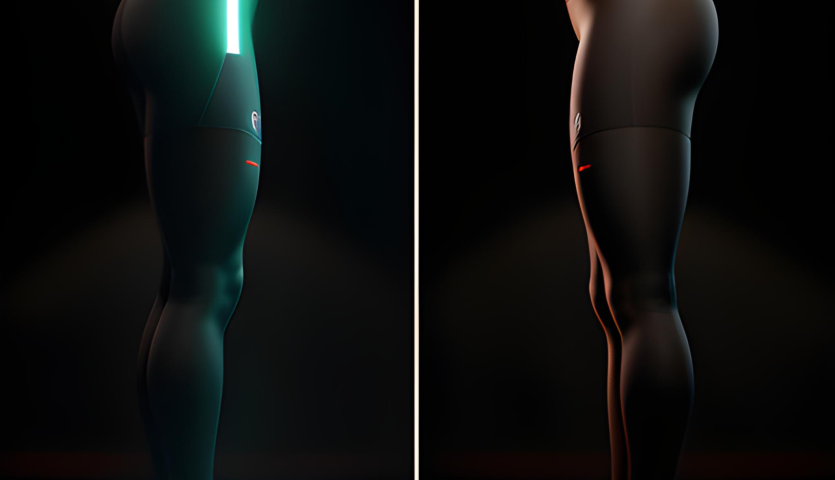
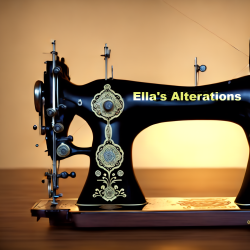



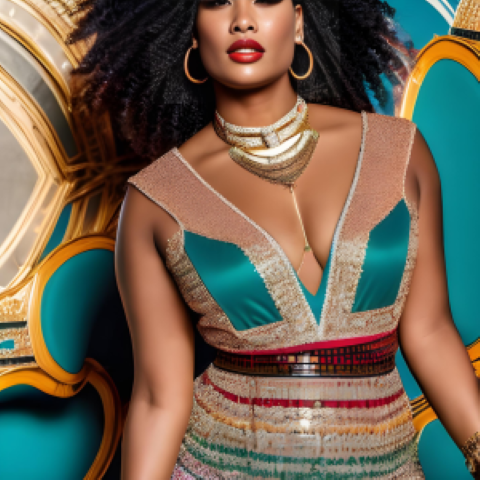
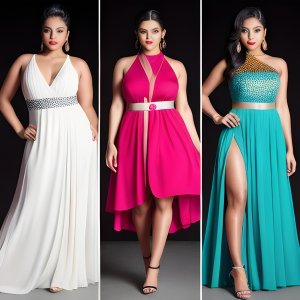
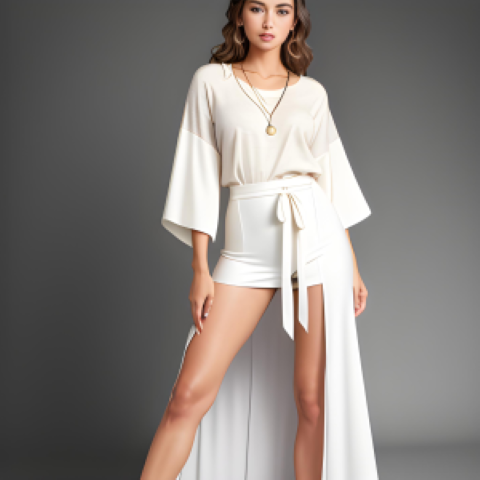
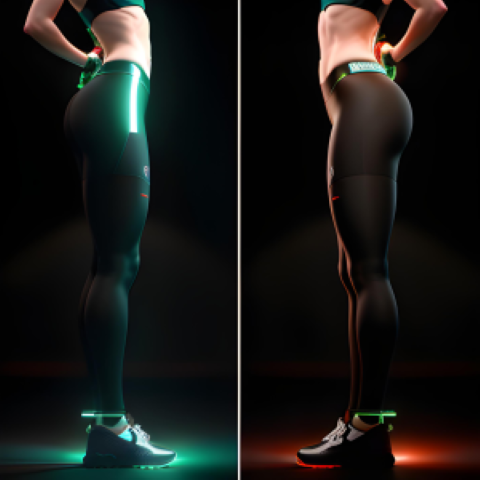


2 Comments
Your dress, expertly altered by Ella’s Alterations LLC, is a true masterpiece. The way they tailored it to your body shape showcases your figure beautifully. The flowing fabric and elegant draping create a romantic and ethereal look. You’re going to feel like a princess as you glide across the dance floor. Ella’s Alterations LLC did an amazing job. I learned so much from this post on The Science of Perfect Fit.
Ella’s Alterations LLC has worked their magic on my prom dress! The alterations have made it fit like a glove, accentuating all your best features. The neckline is now perfectly tailored, and the hemline hits just at the right spot. The intricate details and beadwork sparkle with every move you make. I’m going to be the center of attention, radiating confidence and elegance throughout the night.